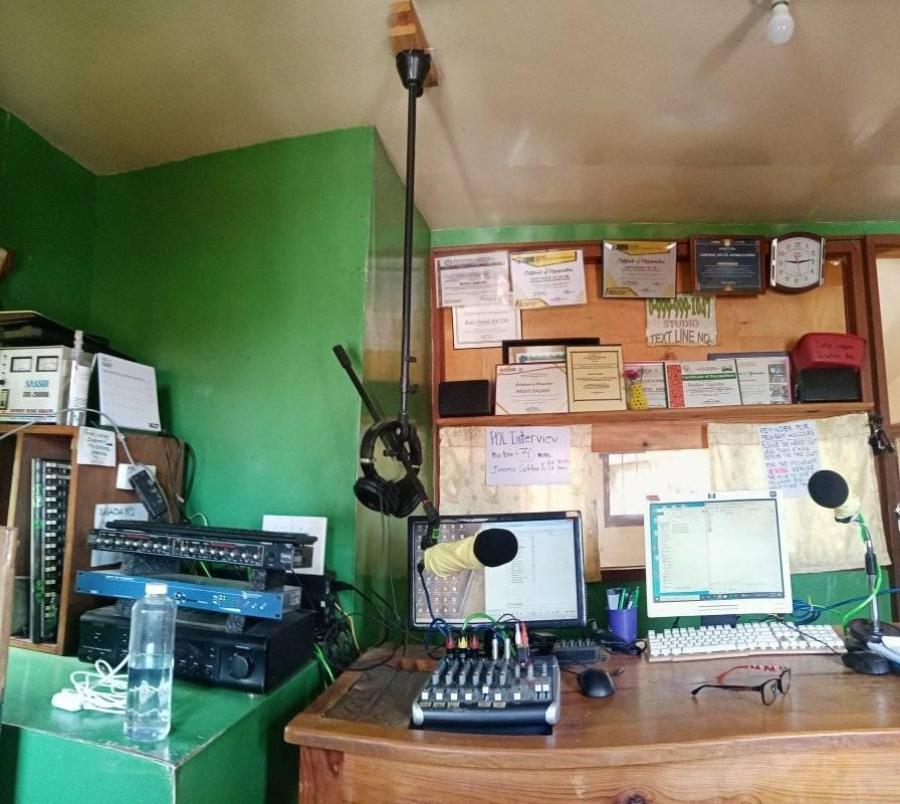With a single call on "Metrocom" from Ferdinand Marcos of the Philippines to the Manila branch of the national police, an embarrassing newspaper can be shackled. Marcos has played cat and mouse with the once "freest press in Asia" for the past 10 years - recently closing the opposition newspaper, We Forum. But even Marcos' control of the Philippines media is small compared to the transnational corporate (TNC) and U.S. domination over the country's communication/information estate.
In 1967 Marcos' media frontman, Roberto Benedicto, bought the Philippine's single TV station - KBS. The same year, Marcos, president-for-life, allowed the U.S. Defense Communications Agency (DCA) to build an Intelsat communication satellite receiving station outside of Manila as part of the U.S.-ASEAN (Association of Southeast Asian Nations) cooperative "electronic battlefield" strategy to defeat the Vietnamese war for national liberation.
To accommodate the DCA Marcos created a "local" management firm, the Philippine Overseas Telecommunication Corporation (POTC), with Benedicto and other trusted supporters on its board of directors. In fact, the real managers of POTC were five American and Canadian corporate executives and communication commanders brought in from GTE/Philippines and Clark Air Force Base who together attempted to create a Manila-based commercial and security-oriented "East Asian Satellite Consortium" (EASAT) to include the ASEAN countries and South Vietnam.
The unanticipated outcome of the war changed part of that scenario, but before abandoning the EASAT idea and pulling out of POTC the GTE-Clark group leased 30 of the 40 POTC satellite circuits to the U.S. military and helped plan a national telecommunication system that was hooked up in 1979 to the Indonesian "Palapa" satellite.
The domestic satellite system, "Domsat," has 11 earth stations located in strategic points of the archipelago coterminous with Marcos' now national KBS-TV network. One of the earth stations is mobile, allowing Philippine armed forces to instantly communicate with any area contested between themselves and the insurgent Muslim MNLF or communist New People's Army. Overseeing the national communication network, Marcos had installed a direct satellite broadcast hookup to the presidential palace along with a U.S. AID-supplied telephone hotline which was used to coordinate the 1972 martial law implementation.
The "End Users"
Marcos has also used his extraordinary martial law powers to censor any nationalist objections to his open door policies toward TNCs. A decree prohibited in the mass media "subjects that dishonor, alienate or derogate... any nation with which the Philippines maintains friendly relations" and Marcos has established an extremely hospitable investment climate.
* The British international telecommunications giant Cable & Wireless stepped in and formed a "joint venture" submarine cable carrier and carrier's carrier partnership with the Benedicto group.
* RCA Global Communications and ITT World Communications established similar arrangements, respectively, with Marcos' defense minister, Juan Ponce Enrile, and with the country's most financially extended family business group, the Ayala-Zobels.
* The Japanese conglomerate Nippon Electric provided the $30 million set of Domsat earth stations, and Japanese consultants have exploratory plans underway to set up telecommunication interconnections with World Bank-sponsored electrification projects in the northern provinces.
* The biggest plum has gone to the West German telecommunication rival of ITT, The Siemens Corporation, which began in 1978 a 6.5 billion peso ($870 million) project with the private Philippine Long Distance Telephone Company (PLDT) for an all-digital switching and dialing telephone system for the Metro Manila area where 76 percent of the country's telephones are concentrated.
The list of users of these telecommunication links and sponsors of the mass media reads like a who's who of the "Fortune 500." Domsat's only important customers are PLDT and the Benedicto TV chain whose major end users, in turn, are international banking, industrial and trading firms; the U.S. government for telephones; and such TV advertisers as Unilever, Proctor & Gamble, Colgate-Palmolive, Nestle, Pepsi and Johnson & Johnson. Some 75 percent of airtime is contributed by TNCs and 60 percent of Philippine television programming are such American reruns as "Charley's Angels," "S.W.A.T." and "The 700 Club." Data and telex transmissions are similarly dominated by TNCs. The largest single end user of Philippine telecommunications is the massive U.S. military installation at Clark and Subic Naval Base. Even the government Voice of the Philippines, broadcasting the nation's culture overseas, runs a sign on to sign off canned format of "easy listening" music imported from the Kala Music Company in Kalamazoo, Michigan.
Technological Dependency
The Philippine telecommunication infrastructure is presided over by a young aggressive minister of communications and transportation, Jose P. Dans, who was chairman and president of a fast-growing private construction firm with contracts in the Middle East worth $375 million at the time of his promotion. He was also chairman of a joint venture automotive company with the Japanese Hino and Marubeni corporations. Dans' program has been to integrate national telecommunications under the private ownership of Benedicto and PLDT president Ramon Cojuangco whose wife is part of the inner circle of Imelda Marcos.
Integration has, in fact, been pushed since 1973 by the World Bank in order to develop the proper communication infrastructure to support the export industrialization program, the three operating TNC-dominated export processing zones and a new international division of labor, all of which have Bank funding.
The Philippines also hosts the Southeast Asian headquarters of the CIA and Voice of America.
It is difficult to delineate where Marcos' interests begin and TNC and U.S. military interests end. The regime has thus far managed to provide the elite and middle class with access to the symbols of affluence and status - western consumer goods, education, entertainment and culture. At the same time the World Health Organization has ranked the Philippines as one of the most undernourished nations in Asia; even the World Bank has admitted in internal documents that real wages of workers as well as other social indicators show a dramatic decline since martial law. The trade union movement, despite bans on strikes and organizing activity, is the most militant since the pre-martial law period.
Such conditions have proven fertile to the expansion of the New People's Army and the MNLF, particularly in Mindanao. Here again advanced communication technology will be the government's key weapon in attempting to maintain the status quo. The Philippines is the largest Asian member group of the U.S.-based Armed Forces Communications and Electronics Association (AFCEA), a worldwide organization that brings together defense communication representatives of the military-industrial complex. According to a Philippine AFCEA chapter document, their present defense communication network is being replaced with new electronic switching facilities; ten Philippine armed forces officers and enlistees have been trained by Rockwell International "in connection with the acquisition of digital equipment for the Mindanao Microwave System." This appears to be little more than a replay of the electronic battlefield strategy.
Given the easy U.S. military-TNC penetration of the Philippine information order, it is symbolic that the opposition newspaper. We Forum, was shut down for planning to run a series documenting the dubious war record and medals of Ferdinand Marcos. For a man like Marcos whose image as a national leader depends on his reputation as a hero and a strongman, token concessions to a free press are apparently too risky a policy when the emperor has no clothes.
Article copyright Cultural Survival, Inc.



